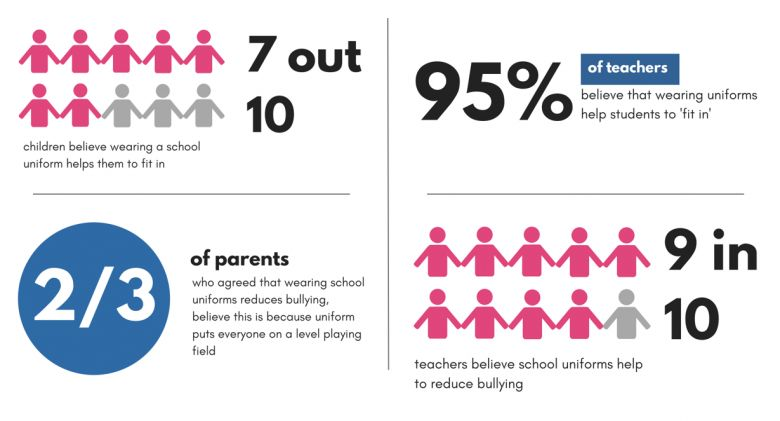Are Uniforms Necessary?
With school uniforms being the norm of private schools and some public schools what are the reasons that many think that uniform guidelines are or aren’t necessary.
You walk into school wearing the same polo tucked into the same skirt as everyone else. The skirt is at a reasonable length, three inches above the knee. You look down at your shoes which, according to the uniform guideline can only be tennis shoes with socks that are white and without pattern or logo. You get cold later that day and realize the only thing you have with you is your athletic jacket for practice later, but you can’t wear it because it’s not part of the uniform. You wonder is this necessary?
School uniforms are usually worn by those who attend private schools, but according to the National Center for Education Statistics, nearly 20% of all public schools have adopted uniform mandates. Approximately 22% of elementary schools, 19% of all middle schools, and 10% of high schools currently require uniforms, and this trend continues to accelerate. Uniforms create a structured school environment created by everyone wearing the same outfit. They establish a school identity that people recognize. It sets an identity of unity and solidarity. But are uniforms really necessary? Though wearing or not wearing a uniform won’t impact your education it may affect your experience.
When you dress up like everyone else it initiates a sense of belonging and community. Additionally, uniforms establish a safe environment, creating a greater sense of school pride, leading to a positive perspective of the establishment. Through uniforms, you implement the practice of your school as a team that everyone works hard to be a part of and to better which is a useful life skill.
Implementing a uniform will teach students to dress smartly and appropriately along with incorporating a sense of discipline preparing students for the workplace environment and dress guidelines. Uniforms keep students focused on their education and not their clothes. Former US Secretary of State Hillary Clinton advocated for school uniforms as a way to help students focus on learning: “Take that [clothing choices] off the table and put the focus on school, not on what you’re wearing.” In agreement with Clinton, uniform guidelines reduce distractions that take away the focus on education. By limiting the variation of what students can wear, you limit comparison. Being less concerned about looks leads to less pressure to fit in by leveling the playing field among students reducing peer pressure and bullying. The teasing of students who aren’t dressed in name-brand
 clothing or new and usually pricier articles of clothing makes it less common to be bullied. Though it doesn’t eliminate bullying based on appearance and economic background it reduces it, leading to a safer school environment.
clothing or new and usually pricier articles of clothing makes it less common to be bullied. Though it doesn’t eliminate bullying based on appearance and economic background it reduces it, leading to a safer school environment.
On the other hand, Uniforms deprive students of their expressive capabilities by limiting what they can wear, valuing conformity over individuality. Students learn in school about figures like Rosa Parks which articulates the importance of self-expression and how not conforming with societal norms can lead to change. The limitation of self-expression during a time of personal growth can be damaging to the mental well-being of students during an already challenging time.
Another reason many argue against uniforms is the harmful gender roles that are instilled. Girls must wear skirts and boys must wear pants. But what about those who identify as non-binary, transgender, and non-conforming? This enforcement of wearing the clothes that correspond with your gender assigned at birth negatively impacts the mental health of queer students who are already experiencing higher rates of depression, anxiety, and suicide. Instilling the ideals of gendered clothing can lead to hypersexualization, especially for teenage girls. Uniforms usually consist of short, tight skirts. Additionally, uniforms may be uncomfortable to students that are overweight and have to tuck polos into shorts or skirts exaggerating their insecurities. This can make students uncomfortable at school, rightfully so, a place where many may feel uncomfortable to begin with.
Though there are positive and negative aspects of having to wear a school uniform and everyone has their own view based on their experiences at their own schools, uniforms are beneficial and practical to a student’s experience in school. There may not be a difference between wearing or not wearing a school uniform, but you are more likely to experience a difference throughout the diverse school environments. The environment and the unique aspects of private schools would be what would distinguish private schools from public, not the set uniform guidelines. In conclusion, a school uniform is not necessary, but may benefit some students and be the preferred method for some.



